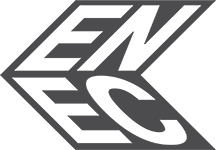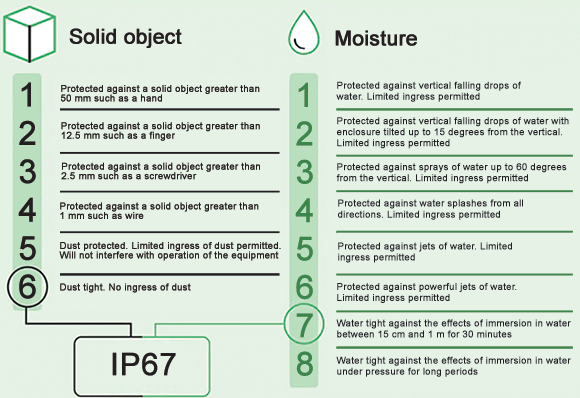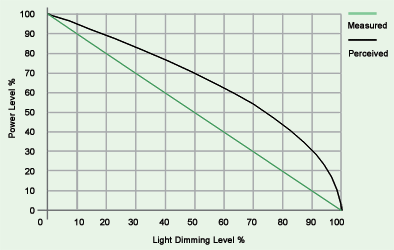
LED lighting has become the product of choice in all types of environments, from domestic to industrial through to specialist areas such as stage lighting. The combination of efficiency in terms of lumens per Watt, long life and controllability of LEDs make them better than incandescents in just about every way.
There are major differences, though, in how to provide power to them; specific electronic LED drivers are needed which have their own characteristics and specifications and it’s easy to get it wrong. A cheap light bulb will just fail early but a low-cost LED driver from a dubious source can be at best unreliable and at worst a shock and fire hazard. It may even actively generate electrical noise, risking interference with other equipment.
Look for the certification mark

A vital starting point when selecting an LED driver is to find one with the ‘ENEC’ mark (Figure 1). This signifies that the product meets the relevant safety standard, EN 61347-1 in Europe, broadly equivalent to the South African Bureau of Standards’ (SABS) SANS 61347-1 standard in South Africa, and UL 8750 in the US.
The ENEC mark also shows compliance with EN 62384, a standard for LED driver performance. In fact, in Europe it is mandatory for luminaires to show the ENEC mark, and also for LED drivers if they are not inside fixtures. Even if an LED driver module is fitted inside a luminaire, in practice it needs the mark otherwise the builder or importer would need to have the driver certified separately, which would be at prohibitive cost and impractical without the close support of the original manufacturer.
Certification must be done by an accredited test facility and the manufacturer must have a quality system based on ISO 9000 standards. The mark also confirms that the manufacturer’s facilities are inspected annually and the product and its production process are monitored going forward.
It’s sometimes thought that a ‘CE’ mark is sufficient to guarantee safety of products but this is not the case; the CE mark is placed by the manufacturer to signify that they think the part meets relevant European directives, and they might think only the Machinery Directive applies, for example. The ENEC mark gives specific guarantees of safety standards applied to the design and manufacture of the driver.
While the ENEC mark can be applied to any electrical appliance against the relevant standards, an interesting development for LED lighting is the formation of the ENEC+ mark, which is a tie between ENEC certification and LightingEurope, the voice of the European lighting industry. The ENEC+ mark is a flexible scheme that is intended to evolve as technology advances, providing independently verified confirmation of a manufacturer’s claims for safety and performance of lighting systems including the most complex LED types.
What the certification tells you
We all believe that the right mark on a product makes it ‘safe’ but the certification is more than a simple guarantee against electric shock. EN 61347-1, for example, covers marking, insulation, moisture resistance, electric strength, thermal endurance, performance under fault conditions, resistance to heat, fire, tracking, corrosion and much more. Internal construction is specified to ensure correct creepage and clearance distances across safety barriers as well as appropriate protection against accidental contact with live parts.
The result is a product that does not just happen to protect against high voltages and temperatures but is shown to be designed and built to do so reliably over many years in service in all reasonably expected environmental and fault conditions. The standards evolve over time and the latest version of IEC 61347-1:2015 A1:2017, for example, has additional requirements for marking, creepage and clearance, and includes consideration of systems that must have high availability in harsh conditions, both electrical and environmental.
We mentioned that the ENEC marking also includes a guarantee of functional performance according to EN 62384 (SANS 62384 in South Africa); this standard covers LED drivers operating on supplies up to 250 V d.c. or 1000 V a.c. supplying constant current or voltage.
The tests applied are for marking to correspond with actual performance, for power rating, power factor, output voltage and current. Start-up into capacitive load is checked along with temperature endurance and input voltage cycling. Fault conditions are simulated such as LED disconnection, LED reduced resistance and output short circuits. In all cases, the driver should be undamaged after replacement of any ‘protecting device’ such as a fuse.
A particular requirement of some LED ‘control gear’ or drivers is that they should present an inductive load to the supply at audio frequencies between 250 Hz and 2 kHz. A specialised network is used for the test, which generates an audio signal on the supply line at 3,5% of the voltage input. When the driver complies, it is marked with a special ‘Z’ symbol.
It’s reassuring that EN 62384 gives guidance on quoting product life and failure rate in product specifications. This is often confused by manufacturers of dubious origin who sometimes even wrongly define MTBF (inverse of failure rate) as lifetime. The standard specifies that life and failure rate are identified separately in hours and FITs (failures in time) respectively.
Driver classification
The standards cover different types of LED drivers, referred to as ‘lamp control gear’ with corresponding constructional requirements. The drivers can be Class I, Class II or Class III, respectively, with a protection earth, earth-free and devices with no voltages higher than SELV (Safety Extra Low Voltage) present.
The system designer should be aware of what the installation requires and use an appropriate part. A Class I rated driver used in an earth-free Class II installation would function, for example, but would be potentially dangerous as driver single-fault protection would be lost, and if the casing is metallic an operator or installer might experience a high ‘touch’ current.
IP rating
According to EN 61347-1 ‘lamp control gear’ must be moisture resistant as a minimum, with 90% humidity tests performed for 48 hours after which insulation resistance is checked. Parts available on the market have differing IP or ‘ingress protection’ ratings (Figure 2) and generally range from IP20 for indoor use to IP67 or IP68 for an outdoor installation where complete sealing is required.

Dimming
Being able to dim an LED through its driver is a key feature that can give significant energy savings, prolonged life and user comfort benefits. In little-used areas, deep dimming when no traffic is sensed can have surprisingly little effect on perceived illumination, with just 10% of LED power being perceived as 32% of maximum illumination (Figure 3). In fact, a 15-20% reduction has been shown to be imperceptible by a majority of users.

Dimming can be achieved in a ‘linear’ way with the LED current varied smoothly or in a PWM (pulse width modulated) way. In either case, at deep dimming levels, there is a risk of ‘flicker’ with poorly designed drivers. The standards test for acceptable levels of flicker as well as residual AC supply ripple, typically at 100 or 120 Hz which is highly visible and uncomfortable.
DALI and DMX
Many LED drivers will have a Digital Addressable Lighting Interface (DALI). This enables remote control and monitoring of the attached LED through a two-wire communications link. A central controller is used which can connect to a maximum of 64 devices, which can be addressed individually or in groups.
The DALI standard, defined in IEC 62386 and IEC 60929, allows for some intelligent features such as 254 levels of brightness control translated to a logarithmic curve that matches the steps in LED power with consistent steps in perceived brightness by the human eye.
DMX512 is a standard for a more general unidirectional control and communication system that is extensively used in stage and theatre environments, where lighting and other equipment such as fog machines can be controlled. The electrical interface is the familiar RS-485 arrangement.
Products available
There are some major players in the market for the supply of LED drivers, such as Fulham. Its range includes DC and low inrush current AC inputs with power levels up to 165 W. Constant current and constant voltage types are available in cases rated from IP20 to IP68. Its LUMO and Workhorse series with ENEC marking are particularly popular with power ratings up to 200 W and currents from 200 mA to 4 A, some with a DALI interface. The parts are suitable for standalone or built-in applications and feature strain relief on their slide-in terminal connectors.
Delta, the largest power supply manufacturer worldwide, has introduced its new LNP series, which is targeted at the cost sensitive, non-dimmable downlight LED market. Rated at 15 W up to 50 W and in an IP20 case with strain reliefs, they are Class II, earth-free.
Mean Well has a large range of LED driver modules suitable for all applications, some with DALI interfaces, and casing styles varying from leaded and board-mount to slide-in terminal types. IP ratings include open-frame boards up to rectangular and circular IP67, and electrical ratings are up to 320 W/5 A.

© Technews Publishing (Pty) Ltd | All Rights Reserved